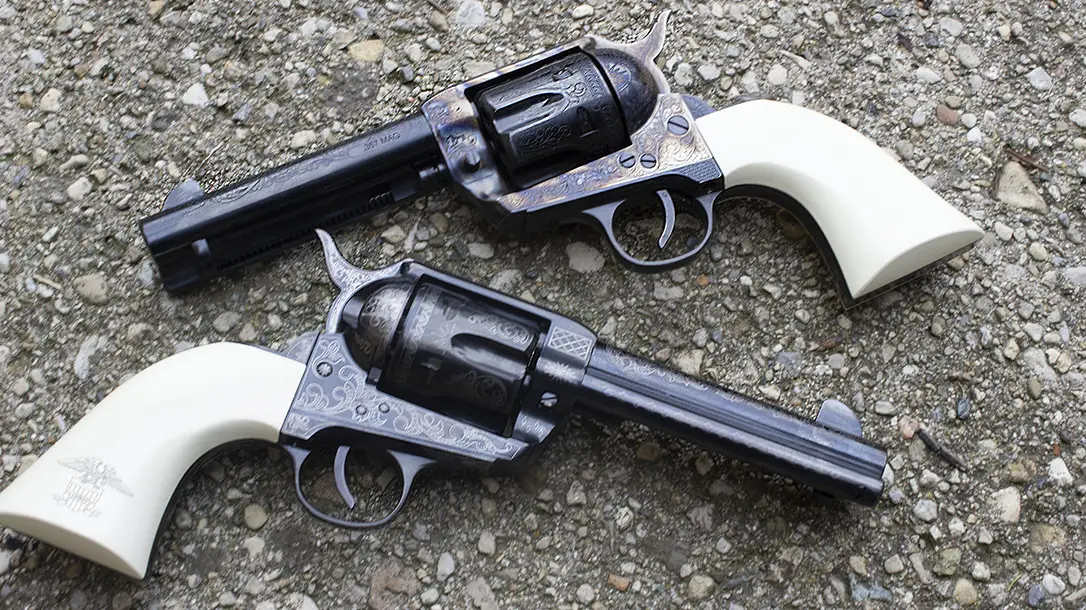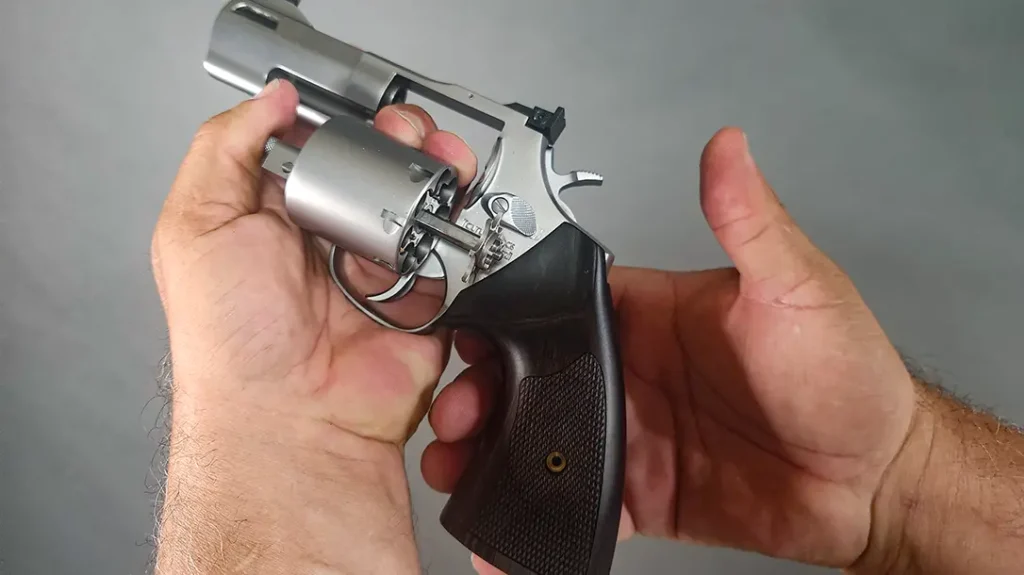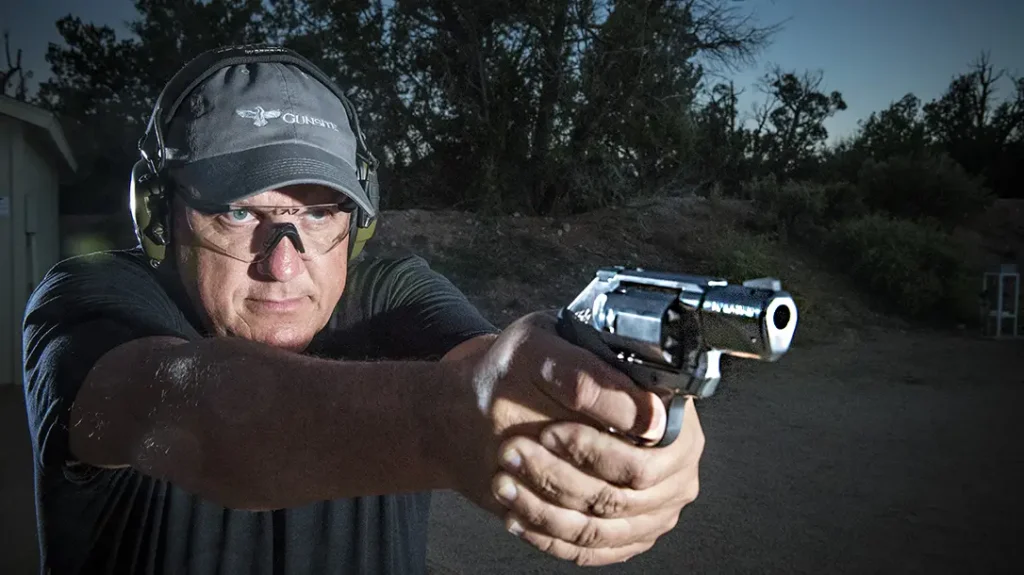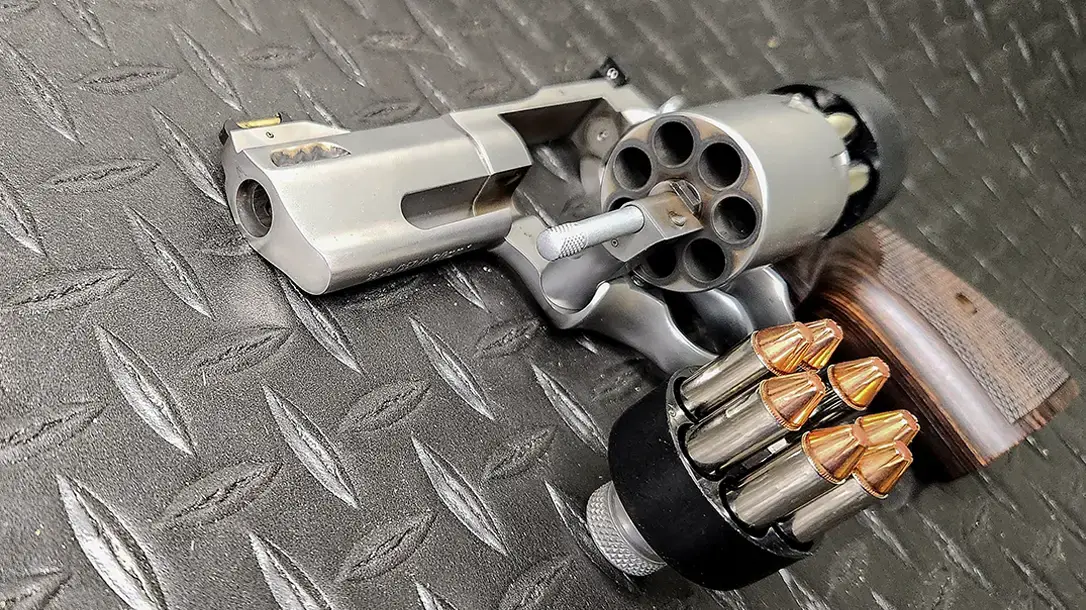For many shooters, a revolver is often their first handgun purchase. Their ease of use is regularly cited as the main reason for ownership and it also doesn’t hurt that revolvers make an excellent choice as a dependable means of self-defense. Since new shooters are born every day, we took the time to break down how revolvers work so that everyone knows the ins and outs of their hardware.

A Quick History of the Revolver
First, let’s go back to the 19th century to where it all began. Samuel Colt patented the revolving (and repeating) pistol in 1836, while his competitors Horace Smith and Daniel Wesson bought the rights for a “bored-through” revolving cylinder for a pistol from Rollin White to go with their patent on self-contained ammunition cartridges. By 1856, when Colt’s patent expired, Smith and Wesson’s timely launch of Volcanic Repeating Arms in 1852, and its subsequent sale to Oliver Winchester in 1855, financed the iconic revolver company that bore the names of the men. As firearms patents expired, other gun companies sprang up and kept improving technology, metallurgy, and chemistry. This ultimately resulted in today’s revolver.
Advertisement — Continue Reading Below

How Revolvers Work
One of the most popular features of revolvers is their simplicity of function. Unlike semi automatic pistols, there is no need to load magazines, rack slides or cycle the action. As with any gun, the more you understand it, the more well rounded you become as a shooter. There are four fundamental parts to the operation of a revolver.
1. As the trigger is pulled, the revolver’s hammer is pulled backward* which also rotates the revolver’s cylinder. This lines up a chamber with the gun’s barrel.
Advertisement — Continue Reading Below
2. When the trigger is pulled all the way back, the hammer is released. The firing pin (located on the hammer) strikes the cartridge primer which then ignites the propellant. As the propellant burns, gas is expelled which creates pressure to discharge the bullet.
3. When all chambers are empty, the shooter opens the loading gate and pushes on the ejector rod to dump out the spent casings.
4. Reload the chambers and repeat!
Advertisement — Continue Reading Below

Revolver Actions – What These Mean
Single-Action Revolvers
The best way to delve into learning about revolvers is to start with “single-action” models. This revolver is the earliest design that required the shooter to manually cock a hammer before pulling the trigger. After firing each shot, users must manually cock the hammer, which makes the cylinder rotate and place an unfired cartridge in line with the barrel to ready it for discharge with a subsequent shot. When all rounds are fired, the loading gate is opened, revealing a spent cartridge case. The empty case is forced from the cylinder by an ejector rod, and the cylinder is rotated by hand to expose the next empty cartridge. The process is repeated until all cylinders are empty. New cartridges are inserted into each empty chamber in the cylinder until all are filled to ready the gun to fire again.
Double-Action Revolvers
The “double-action” revolver is similar but adds a second method of firing. In double-action mode, the trigger rotates the cylinder, cocks the hammer, and releases the hammer. Because double-action mode requires more mechanical work to operate the pistol, it requires more trigger-finger force to fire the gun. Some double-action-only revolvers have hidden hammers and only fire in that second mode.
Advertisement — Continue Reading Below

Revolvers Today
Today we still enjoy both single and double action revolvers. As their popularity has grown we have seen more and more models hit the market. From light weight hammerless models to massive hand cannons capable of defending against Grizzly bears, we have it all. As with all guns revolvers have their pros and cons, but they are can be a viable option for many shooters.
Advertisement — Continue Reading Below























